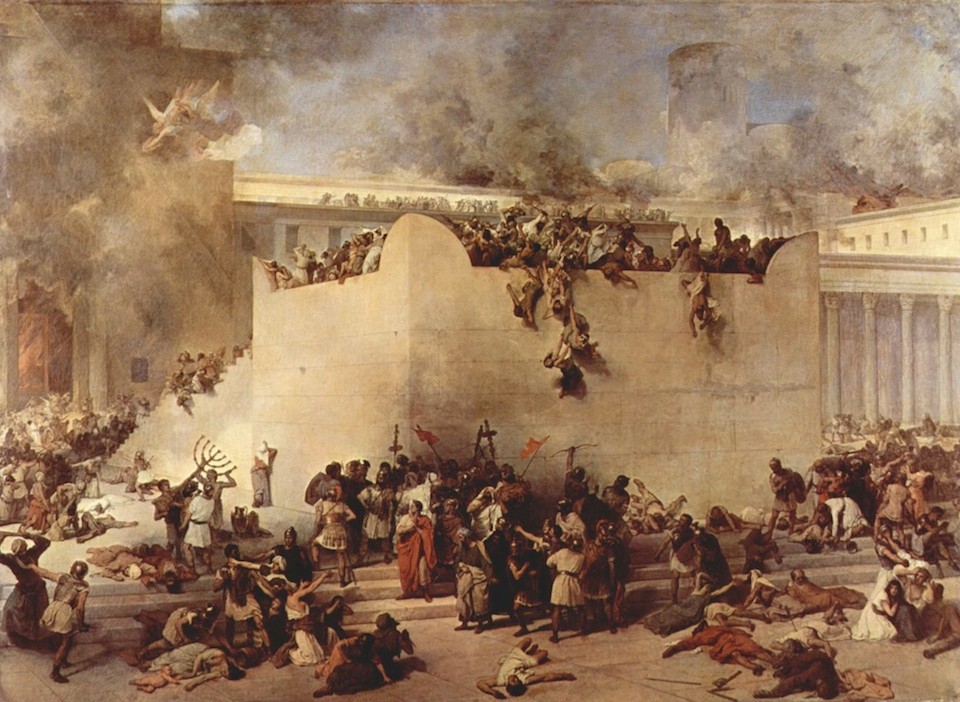For most American Jews, Tisha B'Av is unknown
Despite great religious and historic import, nystery shrouds the day for the non-observant
It is a testament to the variability of Jewish life in America that the summertime fast of Tisha B’Av is for observant Jews a time of momentous communal mourning, and for many others a normal and unremarkable day.
In contrast to Yom Kippur, which sees widespread observance in one fashion or another across the denominational spectrum, Tisha B’Av and its ritual restrictions (which are nearly identical to those of Yom Kippur) are unfamiliar to a sizable contingent of American Jews.
A bit of anecdotal evidence: This author recently worked as the Judaics director for a summer camp affiliated with the JCC movement and was asked to put together a brief Tisha B’Av ceremony, something this particular camp had never before included in its Jewish programming. The campers were so incredulous about the existence of this holy day that many were whispering to each other that it had been invented by the camp staff as a color war breakout prank.
How could Tisha B’Av, one of the most intense and salient religious experiences of the year, be wholly foreign to a large portion of American Jewry? Surely it cannot simply come down to the fact that most people are averse to fasting — if that were the case, how could we explain the respect that continues to be accorded to Yom Kippur?
Unlike Yom Kippur, whose themes of repentance and forgiveness are timelessly compelling, the narrative of Tisha B’Av centers on national calamities that marked the end of Jewish sovereignty in ancient Israel and the official onset of the long Jewish diaspora. The day’s liturgy mourns the disappearance of the holy Temple, high priests and animal sacrifices, and woven into its eulogizing is the wish for a return to these original forms of worship — something observant Jews pray for every day.
Tisha B’Av as traditionally observed openly longs for a way of religious life that even the most fervently Orthodox today would find alien. Understandably, those movements and individuals in recent history that have championed Judaism’s ability to evolve and adapt would not be interested in the message of Tisha B’v — that what is old is best.
Early leaders of the Reform movement in the 18th century, pushing to minimize ritual law, dropped the observance of Tisha B’Av; they considered the transition from sacrificial worship to verbal prayer brought on by the destruction of the Temple as a positive step in the evolution of their faith. The fact that most American Jews are not familiar with Tisha B’Av can likely be traced back to that early decision.
In recent decades, however, more and more Reform rabbis and communities have begun reintroducing some kind of Tisha B’Av observance into their annual schedule.
In an interview with the Jewish Chronicle in 2011, Rabbi Lawrence Hoffman, the Barbara and Stephen Friedman Professor of Liturgy, Worship and Ritual at Hebrew Union College-Jewish Institute of Religion in New York, attributed the shift to two causes —first, to the Holocaust and the subsequent founding of the state of Israel, events that brought the experience of national tragedy and a strong sense of unified peoplehood into the modern Jewish experience.
The second development Hoffman identified was the growth of Jewish camps. As the anecdote above illustrates, Tisha B’Av’s placement during the summer months made it a natural choice for inclusion within the Jewish educational programming at Reform Jewish camps. Rather than focus on the destruction of the Temple, Hoffman explains, educators taught their campers about the Holocaust and other tragic events from throughout Jewish history. Moved by the experience, young people brought the observance of Tisha B’Av back to their home communities.
Like those skeptical campers, many American Jews are still just finding out about Tisha B’Av for the first time.
Binyamin Kagedan has an MA in Jewish Thought from the Jewish Theological Seminary of America.

 61.0°,
Mostly Cloudy
61.0°,
Mostly Cloudy 




